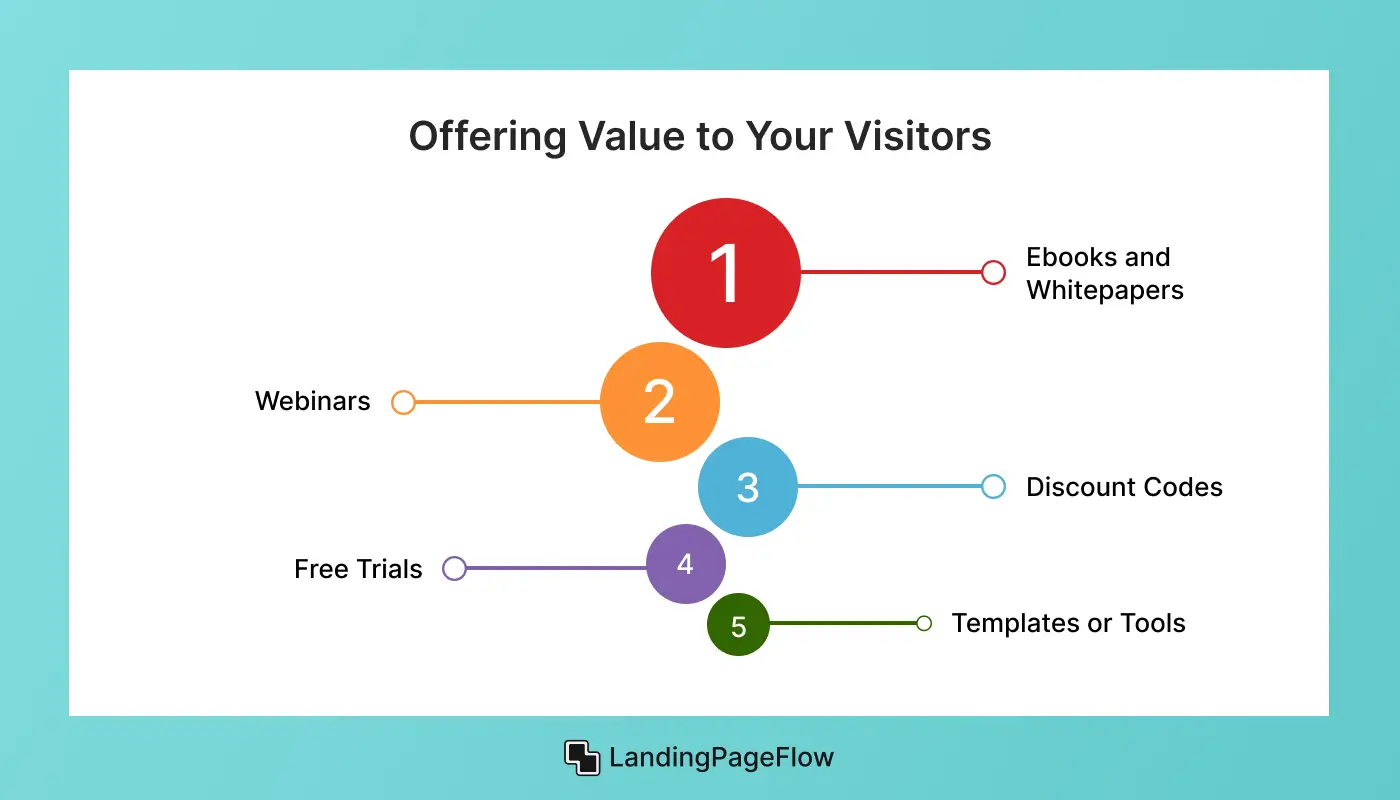Increase Sign-Ups with a Well-Crafted Lead Generation Landing Page

January 20, 2025
A lead generation landing page is designed to capture visitor information, such as email addresses or phone numbers, in exchange for something of value, like free ebook or webinar access.
A well-crafted landing page can significantly boost sign-ups, bringing more prospects into your sales funnel.
But designing a landing page that converts requires more than just attractive visuals - it’s about understanding your audience, offering the right incentives, and optimizing for conversions.
In this guide, we’ll explore actionable strategies and best practices to create a high-performing lead generation landing page that drives results.
Table of Contents
- What Makes a Good Lead Generation Landing Page?
- Essential Elements for High Sign-Ups
- Design Best Practices for Better Conversion Rates
- Lead Magnets: Offering Value to Your Visitors
- Optimizing for Mobile and User Experience
- Examples of Effective Lead Generation Pages
- Conclusion
- FAQ
1. What Makes a Good Lead Generation Landing Page?

A successful lead generation page focuses on one goal — encouraging visitors to submit their information.
Unlike regular web pages, these pages are streamlined to remove distractions and focus on a single call to action (CTA).
Key characteristics of a good lead generation landing page include:
- A clear value proposition that explains what users gain.
- A strong CTA guides the visitor to take action.
- An intuitive layout that simplifies the user journey.
2. Essential Elements for High Sign-Ups

Strong Headline and Subheadline
- Headline: Quickly convey the primary benefit (e.g., "Boost Your Productivity with Our Free Guide").
- Subheadline: Offer a short explanation that supports the headline and encourages action.
Clear and Compelling CTA
- Make sure the CTA is action-oriented (e.g., “Get My Free Copy” or “Join the Webinar”).
- Use contrasting colors to make the CTA button stand out.
Minimal Form Fields
- Ask only for essential information to reduce friction.
- For most lead forms, just asking for a name and email works well.
Engaging Visuals
- Use relevant images, videos, or illustrations to support the offer.
- Product mockups or demo videos can help users visualize what they’re signing up for.
Social Proof
- Add customer reviews, testimonials, or trust badges to build credibility.
- Mention the number of subscribers or users if applicable (e.g., “Join 10,000+ Subscribers”).
3. Design Best Practices for Better Conversion Rates

Focus on Simplicity
- Keep the design minimal with plenty of white space.
- Remove unnecessary navigation links to avoid distractions.
Use Mobile-Responsive Layouts
- Ensure the landing page looks great on all devices.
- Test buttons, forms, and text on both desktop and mobile.
Visual Hierarchy
- Use larger fonts and bold colors for your CTA and headline.
- Arrange sections logically to guide users toward the form submission.
4. Lead Magnets: Offering Value to Your Visitors

A lead magnet is something you offer in return for the visitor’s information. The more valuable your offer, the more likely users are to sign up.Popular lead magnets include:
- Ebooks and Whitepapers: Useful for B2B audiences seeking in-depth knowledge.
- Webinars: Great for showcasing expertise and building trust.
- Discount Codes: Perfect for eCommerce landing pages.
- Free Trials: Encourage users to experience your product firsthand.
- Templates or Tools: Offer downloadable resources like calendars, checklists, or spreadsheets.
5. Optimizing for Mobile and User Experience
Fast Loading Times
- Compress images and avoid large media files to ensure the page loads quickly.
- Pages that load in under 3 seconds tend to perform better in conversions.
Easy-to-Fill Forms
- Use large input fields and clear labels to simplify form submission on mobile devices.
- Enable autofill options to make the process faster.
A/B Testing for Performance
- Test different headlines, CTA placements, and form lengths to find what works best.
- Tools like Google Optimize or Unbounce allow you to experiment with multiple versions.
6. Examples of Effective Lead Generation Pages

1. HubSpot’s Free CRM Landing Page
- Uses a compelling headline and clear CTA.
- Provides social proof with customer testimonials.
2. Shopify’s Free Trial Page
- Minimal design with a prominent CTA button.
- The form requires only an email, encouraging quick sign-ups.
3. Trello’s Demo Access Page
- Uses a product screenshot and demo video to highlight the platform.
- Includes a simple form with a straightforward CTA.
Conclusion
Creating a lead-generation landing page that converts requires a mix of thoughtful design, clear messaging, and compelling offers.
Start with a strong value proposition, keep the layout simple, and focus on a single goal—getting visitors to sign up.
A well-optimized, mobile-friendly page will drive more conversions and fill your sales funnel with qualified leads.
Test your page regularly, use analytics to understand user behavior, and fine-tune your approach for continuous improvement.
FAQ
1. What is the ideal length for a lead generation landing page?
There’s no set rule, but concise landing pages with focused messaging tend to perform better. Keep the page long enough to convey your value but short enough to avoid overwhelming users.
2. How many form fields should I use?
Stick to 2-3 fields if possible. The fewer fields you have, the higher your conversion rate will likely be.
3. How can I make my CTA more effective?
Use action-oriented text like “Get My Free Ebook” instead of generic phrases like “Submit.” Ensure the button stands out with a contrasting color.
4. Should I remove navigation menus from my landing page?
Yes, it’s recommended to remove navigation links to reduce distractions and keep users focused on the CTA.
5. How can I track the performance of my landing page?
Use tools like Google Analytics, Hotjar, or HubSpot to monitor visitor behavior, track form submissions, and identify areas for improvement.



























